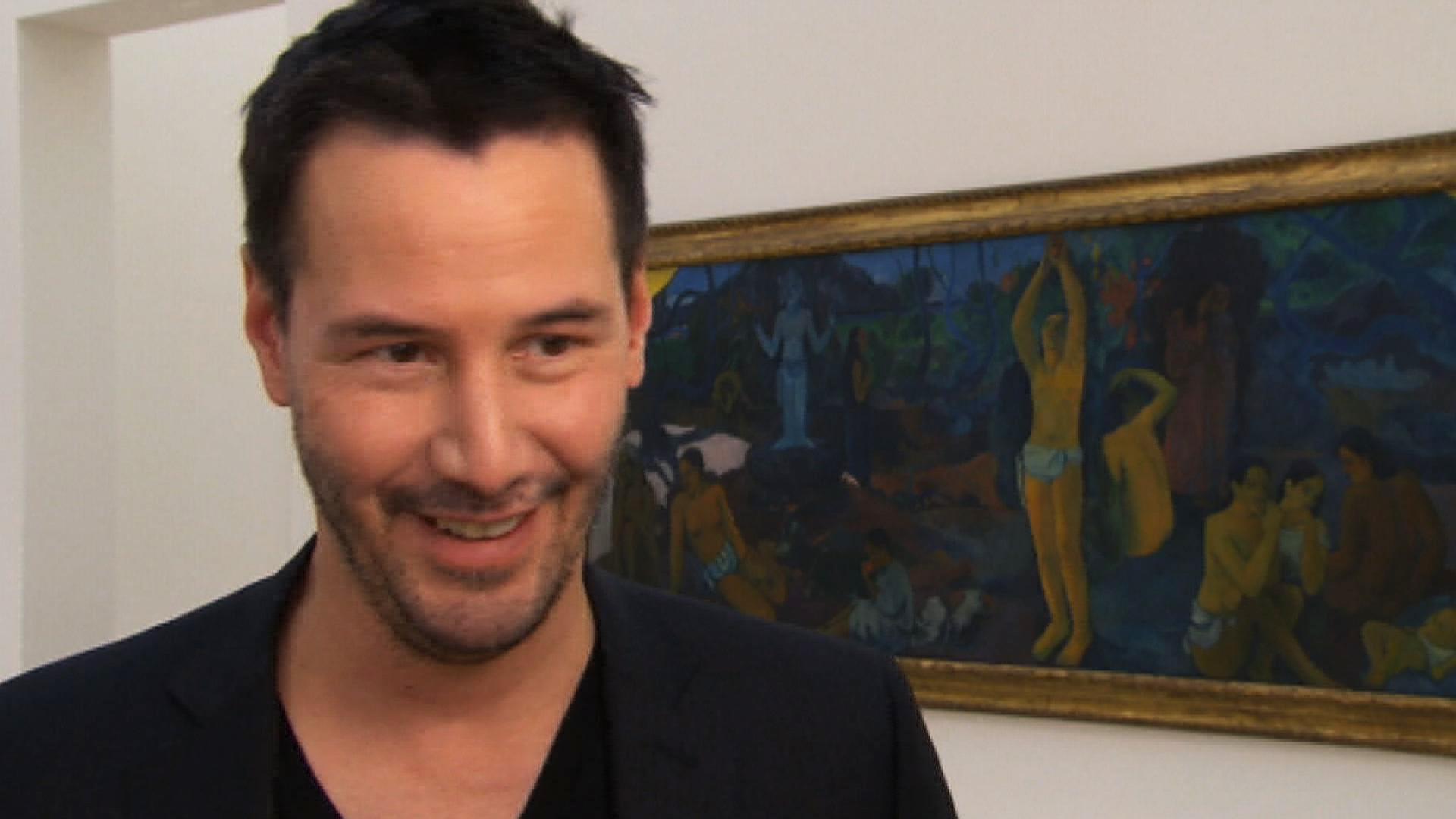
Gauguin: the stars, the “show”… and the crowds

A retrospective of the works of French post-impressionist artist Paul Gauguin presented by the Beyeler Foundation is set to attract record crowds – but is this due more to the art or to an audacious marketing campaign?
The Beyeler Foundation has described the exhibition, which includes several works not seen by the public for many years, as “the most beautiful” ever mounted for the artist, whose experimental style still fascinates a large audience.
Olivier Moeschler, a researcher with the Institute of Social Sciences at the University of Lausanne and a specialist in cultural sociology, argues that the exhibition, due to run until June 28, has successfully combined spectacular art with the latest in technological innovations and slick marketing to appeal to a wider section of the public.
swissinfo.ch: Is the success of the Gauguin exhibition due more to successful marketing than to an overriding interest in the art itself?
Olivier Moeschler: This strategy simply demonstrates that a large exhibition, or one that promotes itself like a Hollywood blockbuster, can incite the interest of a broad section of the public and “sells”.
swissinfo.ch: Does this economic calculation have a place in the world of fine art?
O.M.: When it’s well done, there is nothing really wrong with it. It has been ages since the economy – not only in symbolic property, but in property itself – has understood that it is less about satisfying desire than it is about inciting it; about building a need, creating demand. Cultural institutions – at least when they can afford it – have been well able to master the rules and language of media and communications in order to attract a larger audience. Success pays for the initial agreed investment. That said, it has been particularly well done in this case by the exhibition and the museum, with the serious reading given by Keanu Reeves [at the exhibition’s launch] and the involvement of Bastien Baker.
It also attracts a wide circle of visitors to enjoy these artworks. This strategy is a boon for cultural democratisation, ensuring the largest access possible to these valuable works. It is also a confirmation of the fact that culture and cultural institutions have been forced down from their pedestals. They must defend their existence, make money, interest the crowds, to justify their costs. Of course there is much greater pressure here, in the case of a private foundation. But if it can really expand and diversify the public, it’s rather a good thing.
swissinfo.ch: Should modern art exhibitions use sophisticated technologies to bring in the public?
O.M.: There are numerous overlaps between digital and “traditional” or physical works, between real and digital places. The borders are sometimes blurred between the institutions and the internet, between creators and spectators, between professionals and amateurs… With the digital book presented at the end of the exhibition, they are appealing to a certain creativity as well as to the participative dimension of the spectators. It is one of the achievements of the 1960s and 1970s to think that “we are all artists”, and everybody creates and publishes their works all the time – at least potentially, of course.

More
Keanu Reeves brought in to launch Gauguin show
swissinfo.ch: Do the high costs of organisation (insurance, transport, maintenance…) explain the necessity to make exhibitions profitable?
O.M.: In purely economic and monetary terms, there is probably a necessity to attract a lot of people to make a profit from the investment, but the motivations can never, especially in the cultural sector, be reduced to a material interest. There are always several factors at play, between the need to break even, to disseminate the names of sponsors and patrons, but also cultural democratisation, the pleasure of attracting a large public, the desire to change our views on art and the world.
swissinfo.ch: Don’t the spectacle and the spectacular end up obscuring the perception of art in itself? We speak more of the tactile book than of the works of Gauguin.
O.M.: Everything depends on the way the exhibition has been prepared, on its design as conceived by its creators, the space they build for the public. In this case, it is a modern and trendy event that captures the interest of the media and probably also of a younger audience. It’s one of the main issues for culture and cultural institutions, today perhaps more than ever: we must rejuvenate the public, so renew and thus stay alive. But if the form is consistent with the content and the experience delivers something both for the public and the organisers, including in the relationship between the art and the public, then it’s successful.
swissinfo.ch: Should we return to more modest exhibitions?
O.M.: The cultural field is vast and varied. The fact is there will always be Hollywood-style “blockbusters” like this one, which has a big budget and a big audience, and other events that are smaller in scale, more modest. One shouldn’t confuse the size of a cultural event with its importance – that is true in both senses: it is not because an exhibition is big that it is interesting, nor is it for that reason that it would be uninteresting, far from it! Things are, in culture as elsewhere, complex and sometimes unforeseen, and it is actually the role of art to remind us of this.
Background info: the exhibition
The Renzo Piano building, headquarters of the Beyeler Foundation in Riehen, near Basel, is the most visited of Switzerland’s art museums.
The Paul Gauguin exhibition, which opened on February 8, 2015, continues until June 28 and is expected to break all records for visitor numbers.
Six years in the making, the exhibition brings together 50 works, including 43 paintings and eight sculptures, which travelled a total of 60,000 kilometres to Switzerland via 29 special transports. To secure loan of these important works, the Beyeler Foundation agreed in return to loan other important works of art to other museums, to the point of filling entire rooms, as a guarantee.
Actors Vincent Perez and Keanu Reeves were invited to the exhibition opening to read some of Gauguin’s letters, while Marc Almond and Dominique Horwitz sang songs by Jacques Brel, who was an avid fan of Gauguin.
Translated by Sophie Douez

In compliance with the JTI standards
More: SWI swissinfo.ch certified by the Journalism Trust Initiative



































You can find an overview of ongoing debates with our journalists here . Please join us!
If you want to start a conversation about a topic raised in this article or want to report factual errors, email us at english@swissinfo.ch.